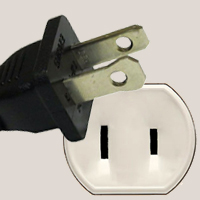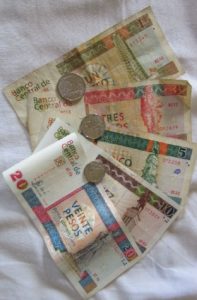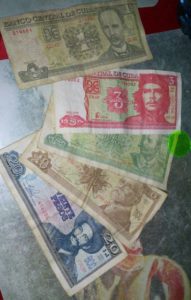Know before you go
Cuba
General Information
Cuba is the largest island in the Caribbean Sea. Its capital and largest city is Havana located in the north of the island. They drive on the right side of the road.
Visa
Most travellers are required to buy a tourist card in order to enter Cuba. Check out this link for more information or contact your ministery of foreign affairs.
Watch Geography Now!
The video will give you a good first overview of Cuba.

Power
Cuba uses Type A, B, C and L plug outlets. The voltage is 110/220 Volt and the frequency is 60 Hz.
Language
The official language in Cuba is Spanish. English is only spoken by people working in tourism.
| Spanish | English |
|---|---|
| ¡Hola! | Hello! |
| ¡Adiós! | Bye! |
| sí | yes |
| no | no |
| ¡Gracias! | Thank you! |
| ¡De nada! | You're welcome! |
| Disculpe | Excuse me! |
| Salud! | Cheers! |
Weather Forecast
Climate
Cubas climate is tropical, moderated by northeasterly trade winds that blow year-round. In general (with local variations), there is a drier season from November to April, and a rainier season from May to October. The average temperature is 21 °C (69.8 °F) in January and 27 °C (80.6 °F) in July.
Average Temperature in Havana
Average Precipitation in Havana
Transportation
How to get there?
Cuba has many airports. The biggest and most frequented airport is José Martí International Airport (HAV) in Havana which is one of the busiest airports in the Caribbean. Many airlines from Europe offer direct flights to HAV.
How to get around?
Within city centers its easy to walk around. Public transport does exist in Cuba, but is not very reliable. There are no fixed schedules. Busses are not punctual or might not go altogether. If you don’t have a car, it’s better to take a taxi.
How to get from town to town?
The best things you can do is either rent a car or book a group tour. If you are out exploring on your own, keep in mind that internet access is only available at certain WIFI spots and you have to buy a prepaid card to use it. So make sure you download offline maps and print out all relevant information you will need for your trip.
Money, Money, Money
Currency
Cuba uses two currencies: the Peso Convertible (CUC) and the Cuban Peso (CUP). The tourist economy operates with CUC set at par with the US dollar while local markets etc. use the Cuban Peso. As a tourist you will almost exclusively use CUC. Pay attention which currency is written on price tags as CUC is worth 26 times more than CUP. Sometimes people will also try to screw you as tourists who are not familar with the two currencies are an easy target.
Peso Convertible (CUC)
Cuban Peso (CUP)
Accommodation
Depending on where you are staying prices will vary of course. Expect to be paying around 40€ per person per night.
Cash
Cuba is not as cheap as you might expect. Also, ATMs are not as easily available as in other countries, so if you have a chance to get to an ATM make sure you stock up your CUC supply. Expect to need around 40€ per day for food, activities and souvenirs.




